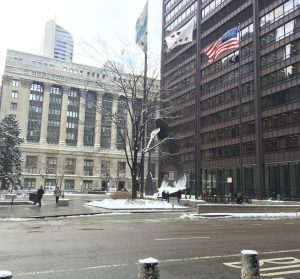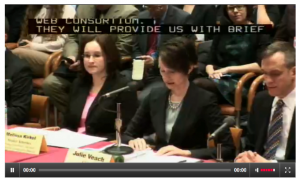Lakeview resident Marie Poppy remembers a time when residents of the neighborhood were scared to walk too far from their homes because of all the crime and homeless people present in the area.
“There were gangs on the streets when we moved here in the early 90s,” said Poppy. “At the time, crime was a big issue.”
A little less than two decades later, Lakeview – especially the 44th Ward – has seen a dramatic decrease in crime and has become a very desirable place to live in the city of Chicago.
“Lakeview is a very attractive neighborhood. People want to live here now,” said Poppy, who is also a member of the neighborhood organization, Central Lake View Neighbors.
Even though the 44th Ward is the largest in the Lakeview area, home to approximately 60,000 people, it has one of the lowest crime rates in the city. This may be attributed to the changing demographics of the neighborhood. At a time when the city’s first black mayor was elected, many of the area neighborhoods were pushing their minority residents out.
“Gentrification in Lakeview has been a much slower process than it was in Lincoln Park, it’s been more controlled and more in the community’s interest,” said Dick Simpson, former alderman of the 44th Ward and head professor of political science at the University of Illinois at Chicago. “The community hasn’t been able to maintain the original demographics of the neighborhood entirely, more better off people are moving into the area.”
Over the past ten years, the number of minorities in the area has decreased. Approximately 68 percent of current residents are white, in contrast to only 15 percent Hispanic/Latino residents, according to the 2000 Census data.
“In general, gentrification involves an increase in income and a decrease in crime,” said Bennett Lawson, deputy alderman of the 44th Ward. “Race tends to be a factor, along with class and income.”
More recently, the ward has become more attractive to a younger crowd – college students, recent college graduates, and young families. A large number of restaurants and boutiques have moved into the area, making it an ideal neighborhood for someone who wants to live in a dining, shopping and entertainment destination.
“I go to school in the Loop but I don’t like living downtown anymore, there’s never anything to do,” said Columbia College student Kate Bond. “I’ve become pretty familiar with the Lakeview area because I have a lot of friends who live there and I’m looking forward to living there as well.”
During a development boom in the 90s, many of the area’s single-family homes were replaced with apartment complexes. Local residents were worried about overdevelopment and made their voices heard. Zoning laws have been created in the area to prevent any more homes being replaced by high rises.
Most of the area’s homes that were preserved are west of Sheffield Avenue, and families typically move into those structures. College students and recent graduates are more common east of Sheffield Avenue, where more apartments are available, said Poppy.
To regulate future development, neighborhood activists have joined Ald. Tunney to create a “Master Plan” for the ward to guide development and growth in a way that will not negatively affect the existing residents and structures.
“The plan will have a lot of input over a long period of time,” said Poppy. “We want a good community with a good quality of life.”

![Reblog this post [with Zemanta]](http://img.zemanta.com/reblog_e.png?x-id=13d730df-4f8f-4444-8f3b-50bae1b80379)





Be First to Comment